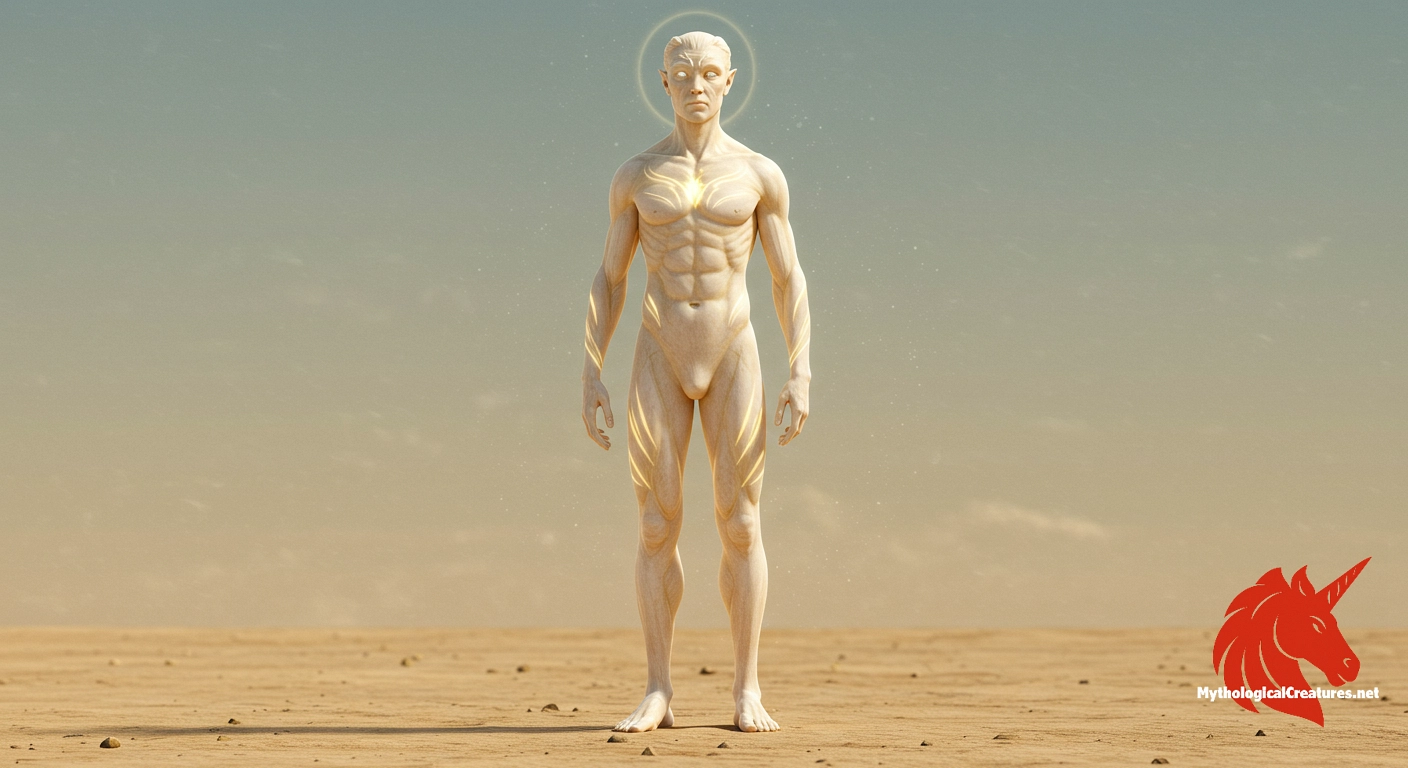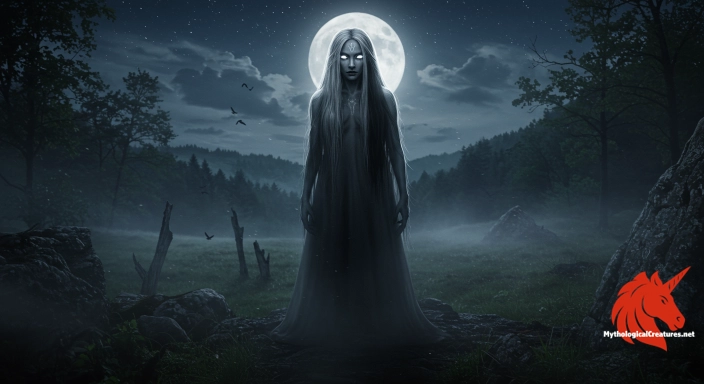Hibil: Hibil is an uthra from the World of Light in Mandaean cosmology.

Hibil
Hibil - A central figure in Mandaean theology, Hibil embodies divine light and serves as a protector against darkness.
Origins & First Encounters
Hibil is a central figure in Mandaean cosmology, revered as an uthra who emanates from the World of Light. His title, Hibil Ziwa, meaning ‘Splendid Hibil’, underscores a persona imbued with radiance and divine grace. He is celebrated not only as a messenger of celestial wisdom but also as a guardian who bridges earthly life and heavenly realms. Emerging from ancient Mandaean tradition, Hibil’s beginnings are interwoven with the faith’s enduring commitment to the supremacy of light over darkness. Early attestations in sacred texts and liturgical recitations highlight his important role in establishing moral and spiritual order. His identity has been nurtured by centuries of ritual practice, making him a beacon for those seeking illumination and redemption. The poetic language found in these texts conveys a being whose very presence embodies transformative purity. Devotees recognise him as both protector and guide, a symbol of hope during times of adversity. Through his recurring invocation in prayers, his legacy as a harbinger of divine insight remains a vital element of Mandaean spirituality.
Source Texts & Tale Variants
The primary corpus of texts that mention Hibil includes the Qulasta, a revered collection of Mandaean prayers where his name appears in an invocatory formula alongside Shitil and Anuš. These liturgical documents serve as critical sources for understanding his spiritual mission and divine attributes. Additional fragments of his narrative are preserved in the Ginza Rba, which provides an expansive vision of the cosmos and the roles of celestial beings. Variants of his story have been transmitted through both written and oral traditions, ensuring that multiple interpretations coexist within the community. In some textual strands, Hibil is depicted as the divine agent tasked with restoring cosmic order in the face of chaos. These texts offer insights into his heroic descents into the earthly realm and subsequent battles against darkness. His recurring prominence in ritual recitations signifies the blend of myth and liturgy that reinforces his importance in religious life. The diversity of sources reflects a dynamic tradition where every retelling enriches the understanding of his character. Thus, the story of Hibil is continuously shaped by evolving interpretations within the Mandaean canon.
Form & Powers
Descriptions of Hibil, though largely allegorical, paint a picture of an ethereal being whose very appearance radiates divine brilliance. He is often envisioned as gracefully adorned in luminous garments that shimmer with an inner light, symbolising the purity of the World of Light. His eyes are depicted as gleaming with the clarity of heavenly orbs, reflecting both wisdom and compassion. Ancient accounts frequently suggest that a halo of resplendent light surrounds him, marking his otherworldly origin. The physical imagery employed in these texts emphasises a stature that transcends mortal proportions, elevating him to a celestial status. Subtle details, such as the interplay of light and shadow around his figure, serve as metaphors for his role in dispelling ignorance. Although exact measurements or corporeal forms are not detailed, the visualisation of Hibil is consistently majestic and awe-inspiring. Every element of his portrayal underscores an embodiment of cosmic order and divine benevolence. Ultimately, his appearance is crafted to inspire reverence and convey the transformative power of light.
Regional Faces
Regional interpretations of Hibil’s myth reveal fascinating layers of local adaptation amid a shared theological framework. In communities throughout southern Iraq and southwestern Iran, his narrative is imbued with a sense of ancient mysticism, reflecting local cultural and historical influences. Variations in the ritual verses and artistic renditions highlight slight differences in how his descent and divine mission are portrayed. Some traditions accentuate his role as a healer and protector, emphasising magical qualities that resonate with local spiritual practices. These adaptations often stress his journey from the celestial to the earthly, symbolising the ongoing battle between light and dark. In different locales, visual depictions of Hibil vary, with subtle modifications in his regalia and posture that echo regional artistic styles. Despite these variations, the core attributes of his character—mercurial brilliance and moral guardianship—remain consistent. Local narratives, enriched by oral traditions, add depth and texture to his mythos. This regional diversity not only enhances the richness of his story but also testifies to the adaptability of sacred myth in myriad cultural settings.
Cultural Parallels
Hibil occupies a unique place in mythological studies, echoing figures found in other religious traditions while upholding distinct Mandaean identity. His role is often compared to that of Abel in Judeo-Christian narratives, with both figures symbolising purity and the virtues of the innocent. The thematic parallels between Hibil and other divine messengers are evident in their shared emphasis on sacrifice, renewal, and the counteraction of cosmic darkness. Such comparisons extend to various Gnostic traditions, where paths of spiritual ascent and divine intervention are common threads. His journey, marked by a descent from the heights of the celestial realm and an active presence on earth, mirrors similar narratives found in broader mythological traditions. The recurring motifs of light, transformation, and redemption bolster these comparisons and highlight universal archetypes. Additionally, Hibil’s depiction as a mediator between realms resonates with angelic figures across diverse cultural mythologies. This cross-cultural dialogue not only enriches the understanding of his persona but also places him within a global context of mythic guardianship. Consequently, Hibil stands as a testament to the enduring power of symbols that traverse both religious boundaries and historical epochs.
Legacy & Modern Evolution
The evolution of Hibil from ancient sacred texts to modern interpretations underscores a dynamic legacy that continues to inspire believers and scholars alike. Early depictions presented him as a stalwart defender of spiritual purity, a motif that has been continually refined over the centuries. His narrative has grown to reflect not only historical religious ideals but also contemporary quests for meaning and redemption. Modern Mandaean communities sustain his memory through ritual practices and liturgical recitations that reaffirm his status as a celestial guide. Artistic representations, ranging from traditional iconography to modern visual art, reimagine his radiant figure in innovative ways. Through literature and academic discourse, Hibil’s allegorical significance is continuously reinterpreted to address present-day spiritual challenges. His enduring influence is evident in the way new generations of Mandaeans and interested outsiders view him as a symbol of hope and resilience. The synthesis of ancient myth with modern cultural expressions demonstrates the timeless appeal of his persona. Today, Hibil remains an emblem of light, a bridge between the ancient world and the modern search for spiritual clarity.
Interesting Fact
Hibil is uniquely identified as the Mandaean equivalent of Abel, illustrating intriguing parallels between Mandaean and Biblical traditions.
Quick Creature Info
Origin:
Associations:
Our Mythic Legendary Rating:

Also Sometimes Known As:
Habitat:
Supernatural Powers:
Physical Attributes:
Abilities:
Behavior:
Lore:
Related Creatures, Tales or Lore
- AAbel
- GGabriel
- MMichael
References
Discover Another Mythical Legend You May Not Have Heard Of?
Uncover the mysteries of ancient folklore and expand your knowledge of legendary beings from cultures around the world.
Dare to Meet the Vâlvă....
Mythical Disclaimer: The images and data on this site are derived from various historical and literary sources, but we have found that many myths often have multiple versions and interpretations across references, sometimes contradictory. As a result, these creature depictions are artistic interpretations—imaginative blends of folklore, legend, and a dash of AI guesswork. Because creature descriptions vary widely, our illustrations and accompanying information represent our best effort to honor mythology while bridging creative gaps. Enjoy these interpretations—just remember, we've done our best to respect the stories and validate available data, but in the realm of mythology, details often shift, imagination leads the way, and nothing is ever set in stone!
Curated by the Mythological Creatures Team (rev. May 2025)
